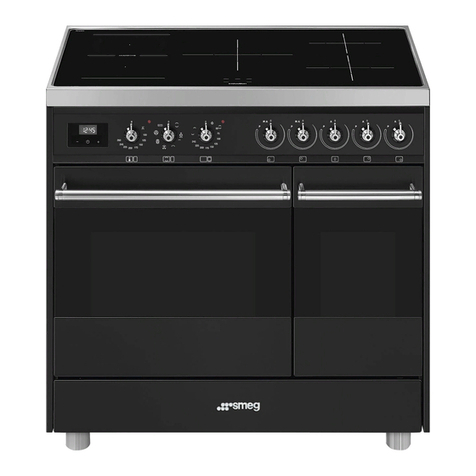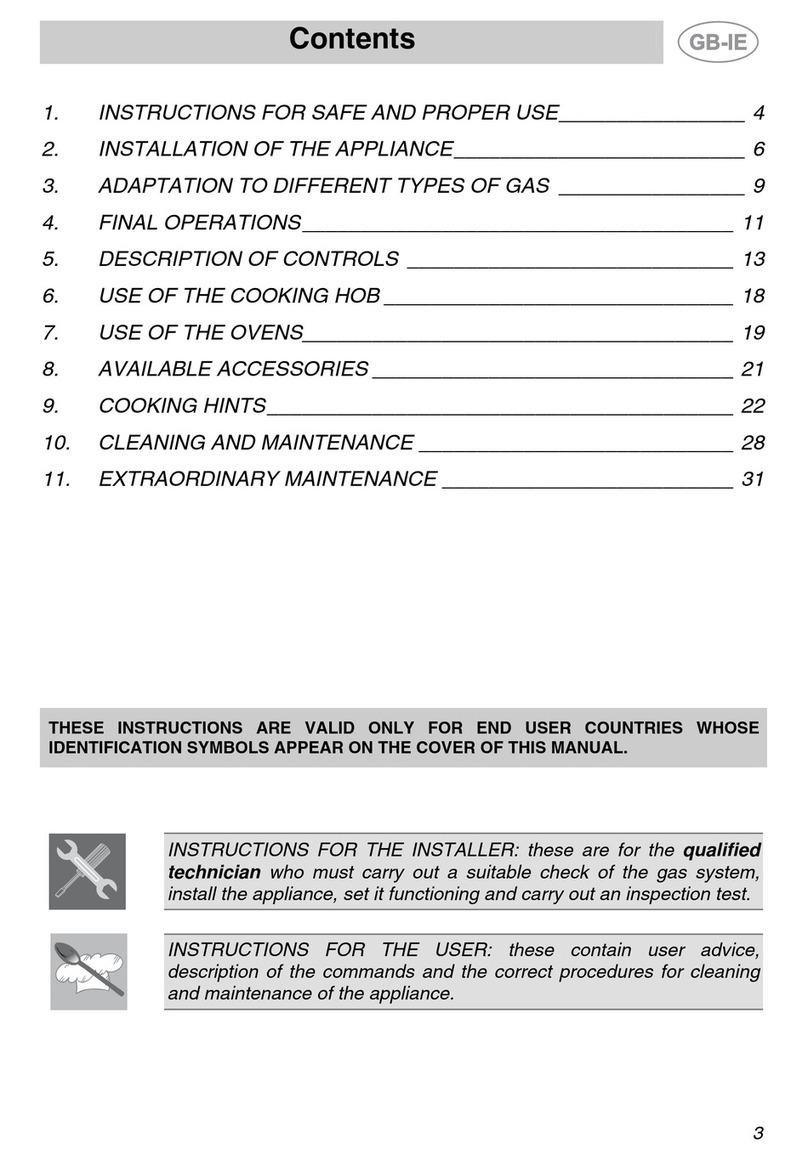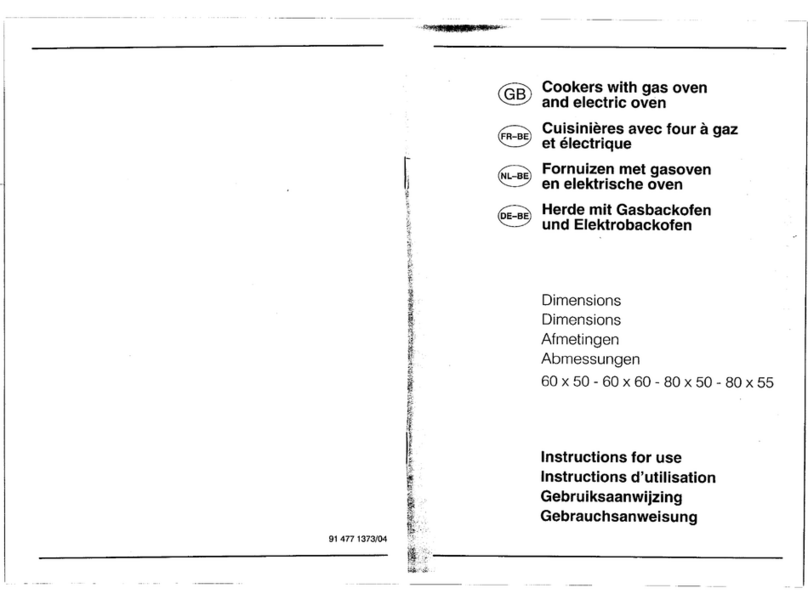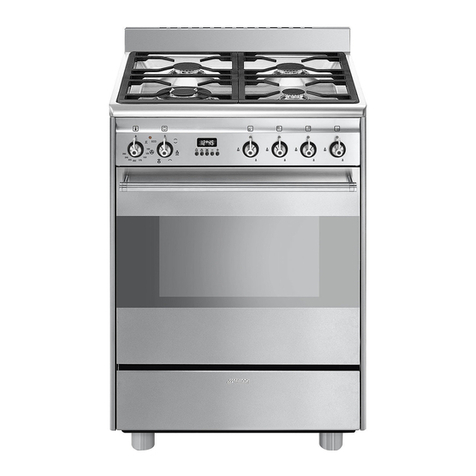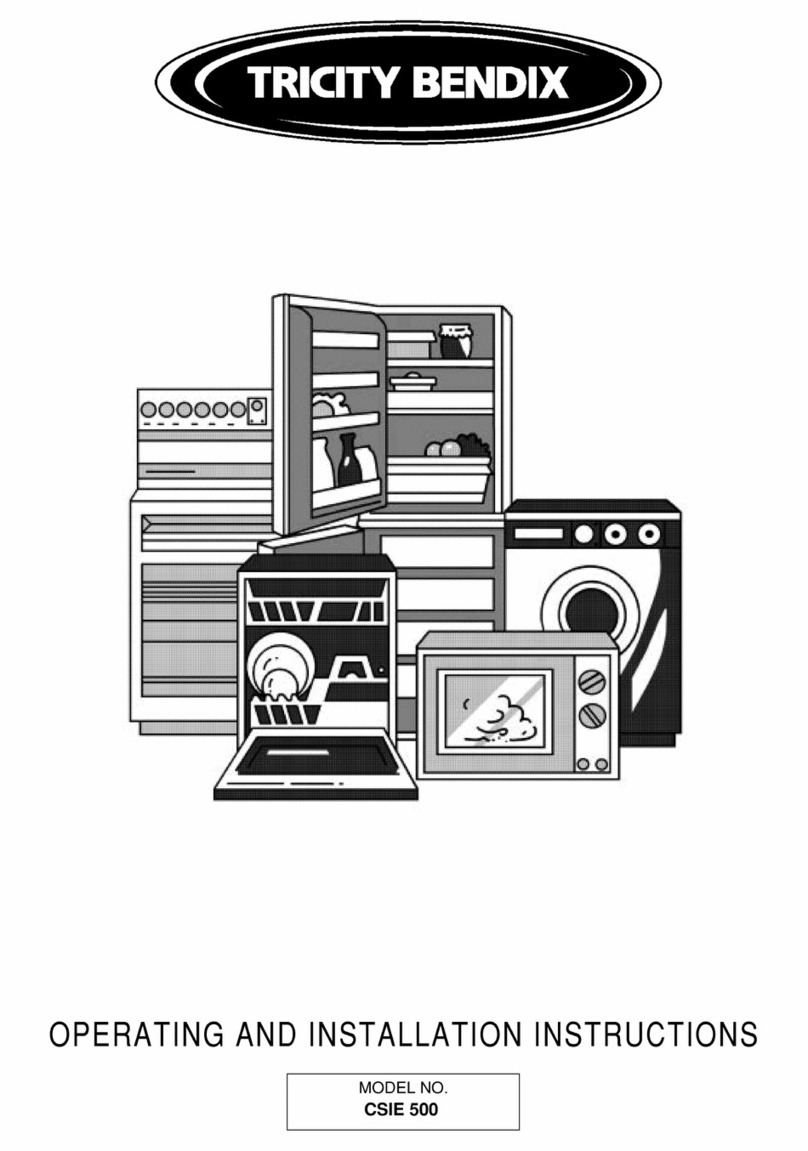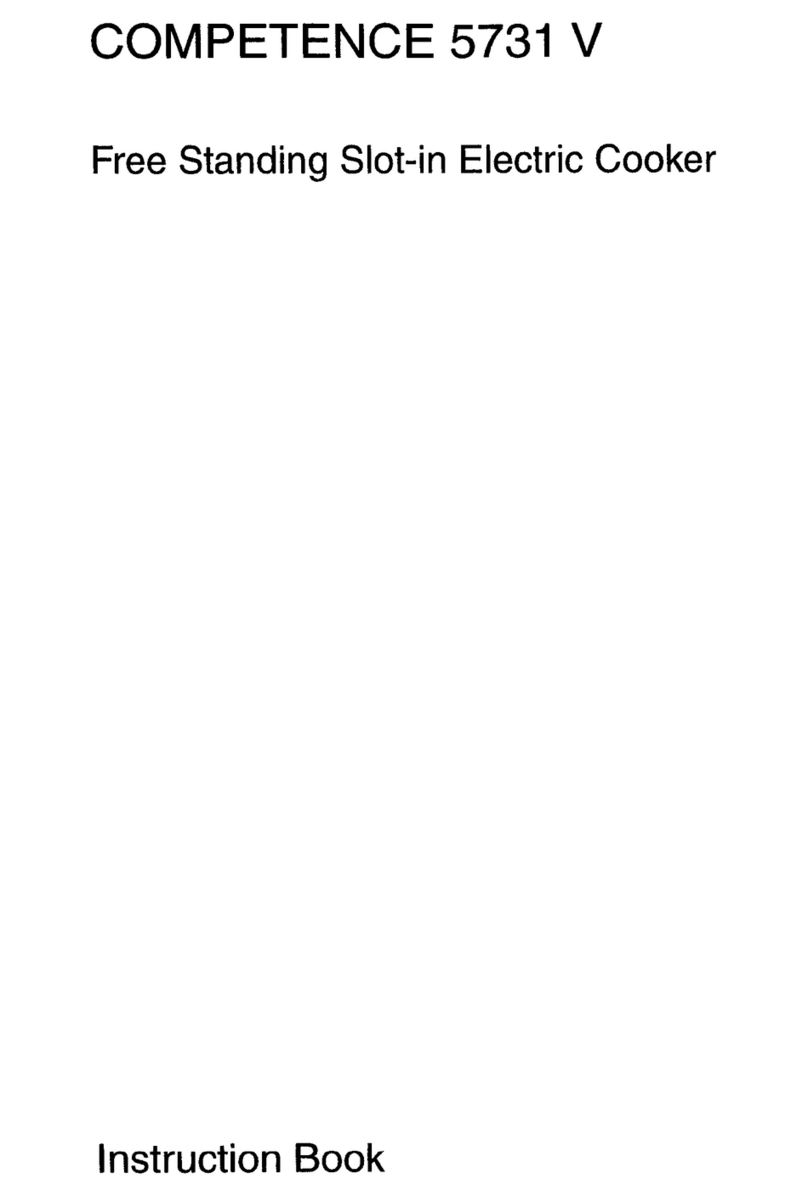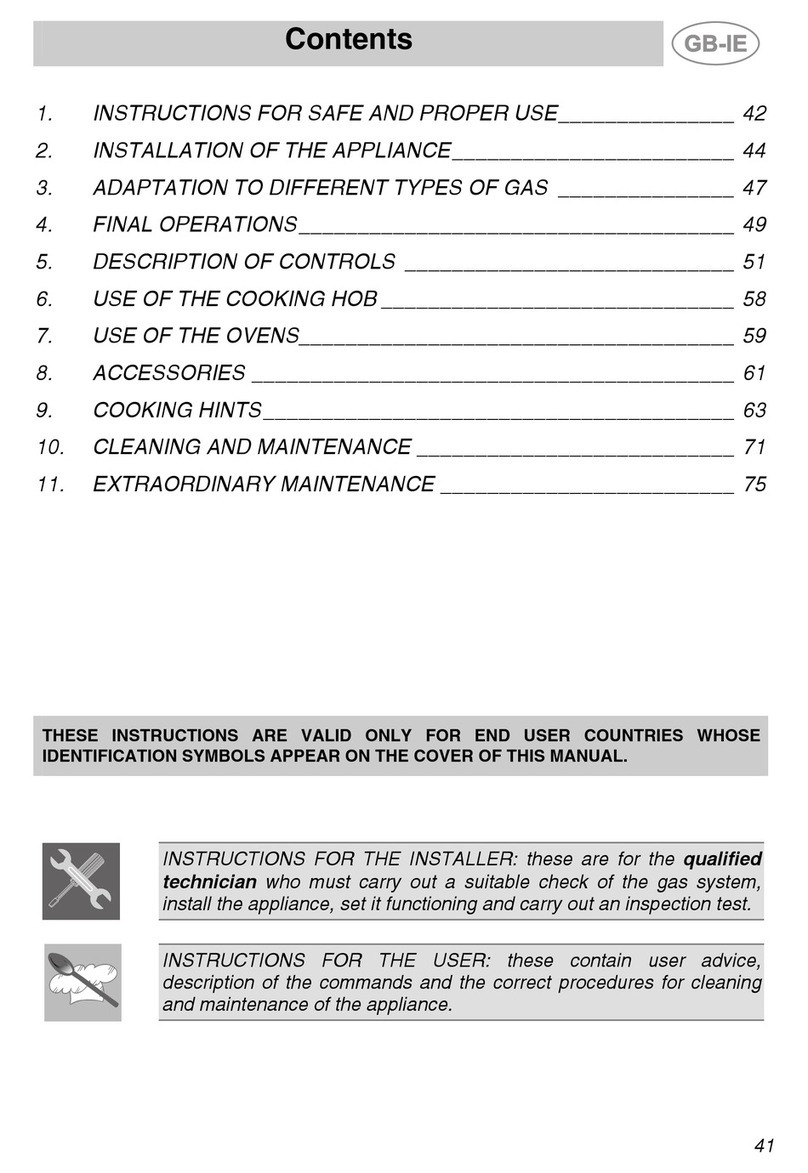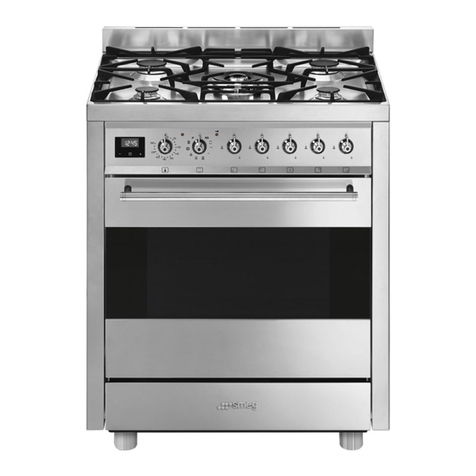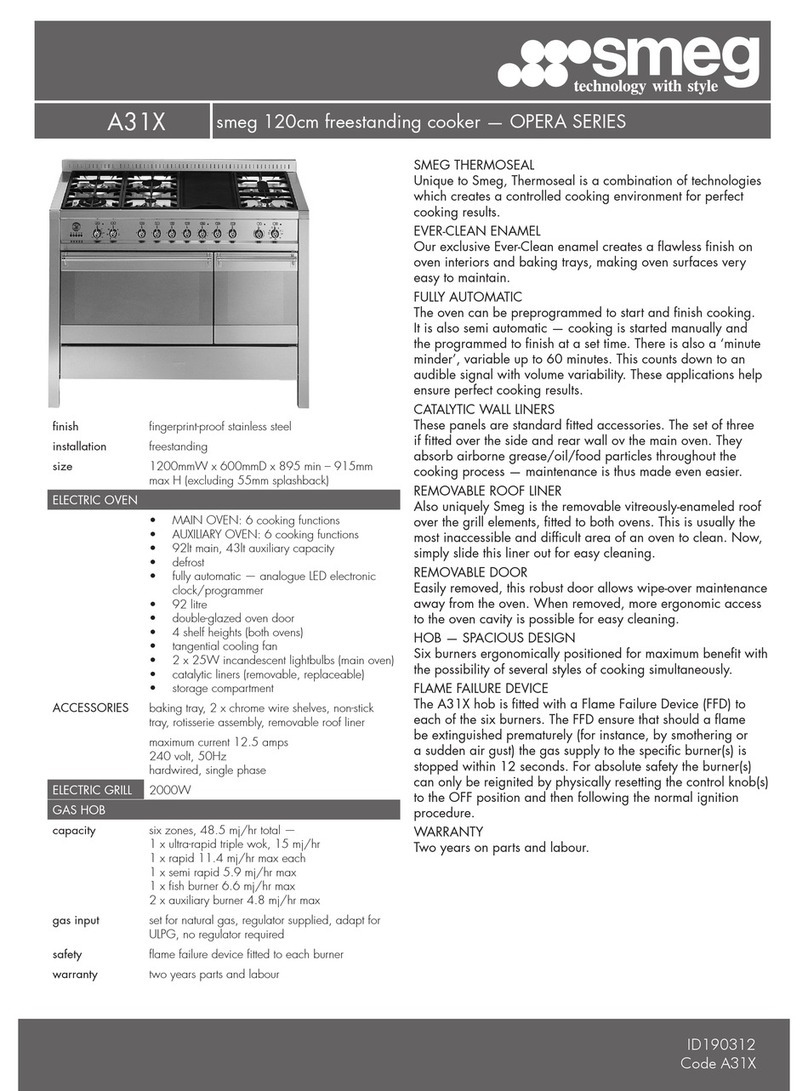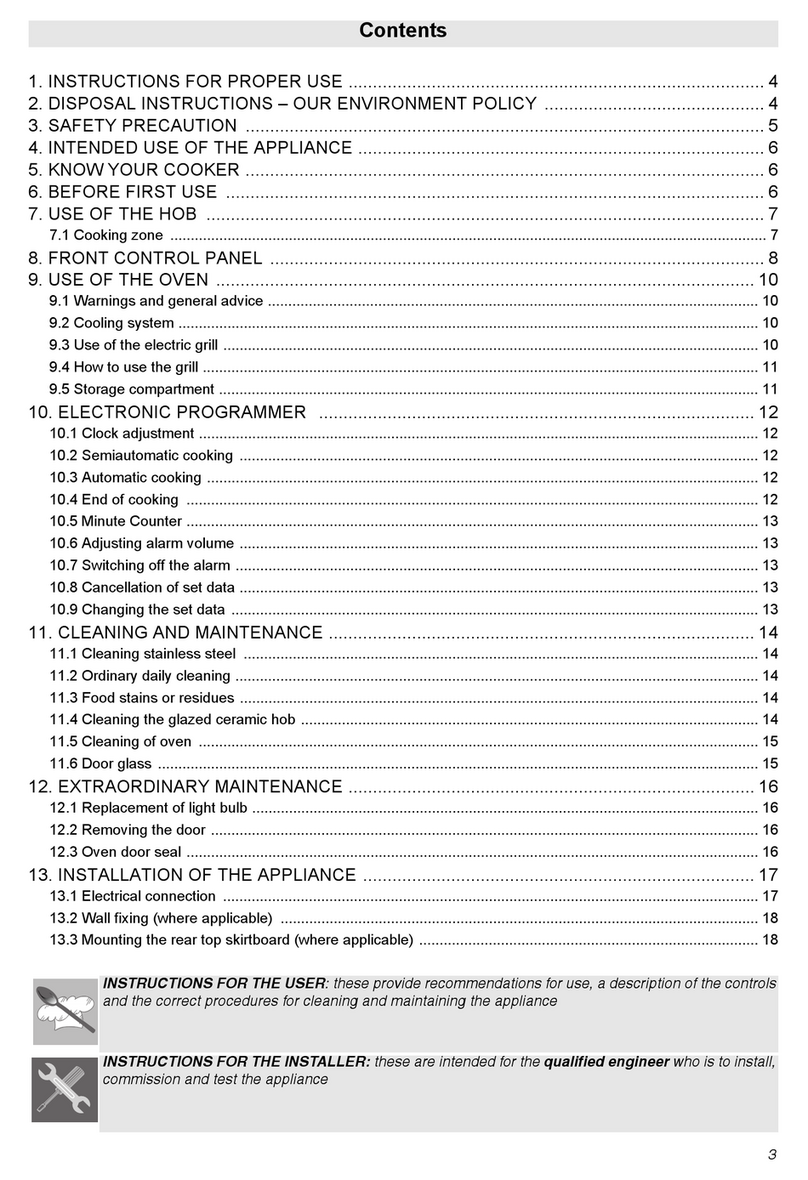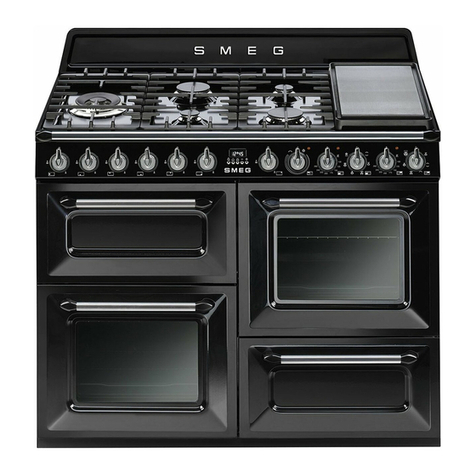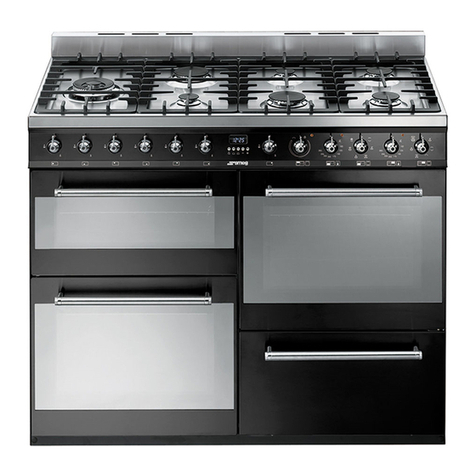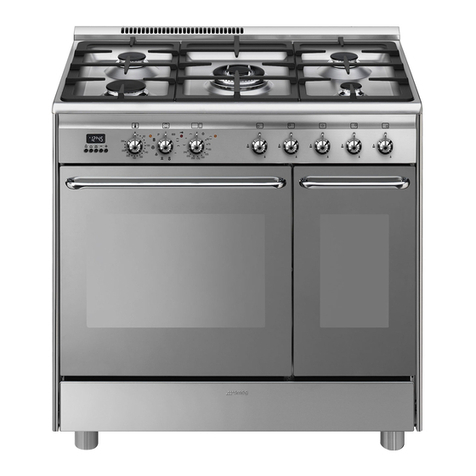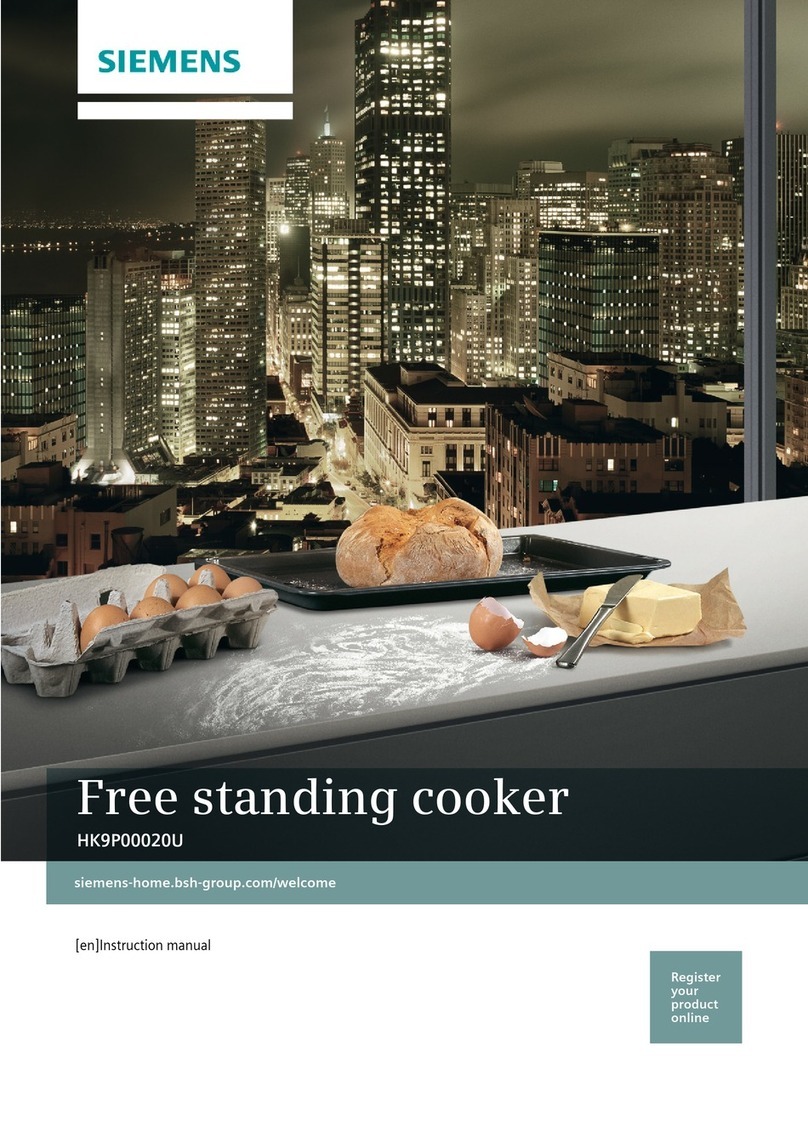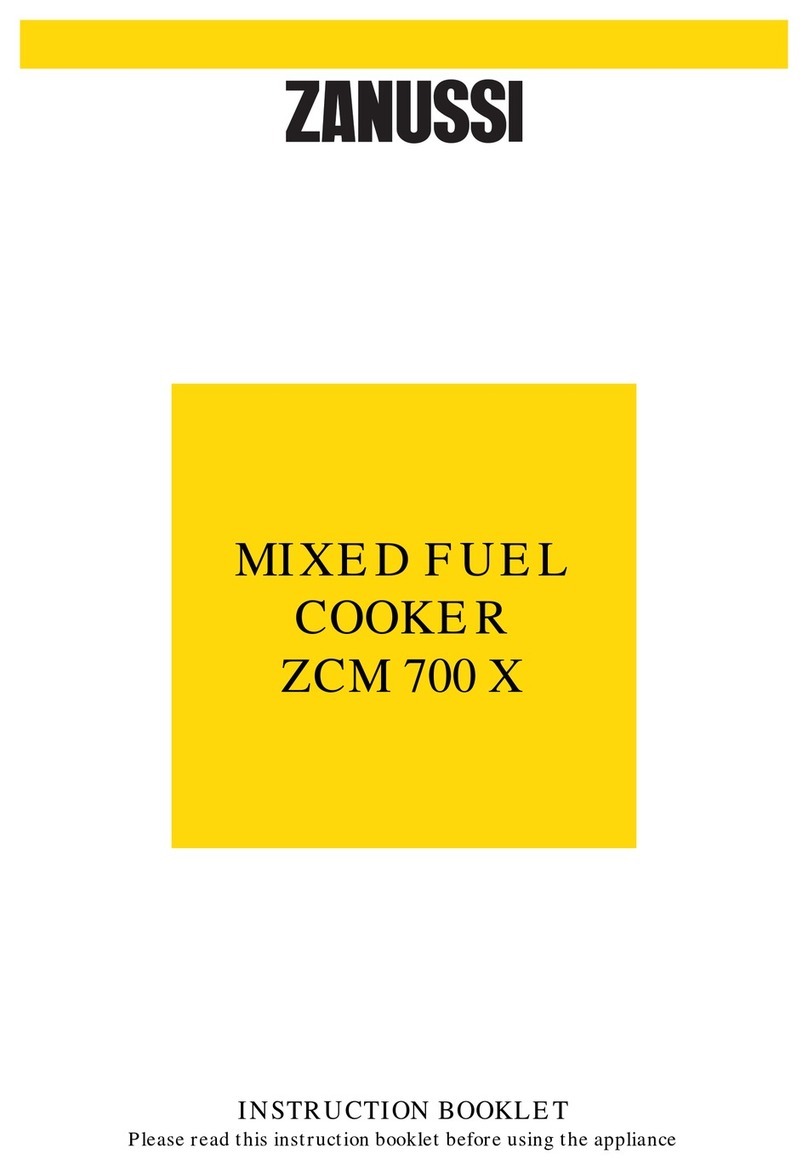
Instructions
4
1 Instructions
1.1 General safety instructions
Risk of personal injury
• During use the appliance
becomes hot. Care should be
taken to avoid touching heating
elements inside the oven.
• Protect your hands by wearing
oven gloves when handling food
inside the oven cavity.
• Never try to put out a fire or flames
with water: turn off the appliance
and smother the flames with a fire
blanket or other appropriate
cover.
• The appliance is not intended for
use by persons (including children)
with reduced physical, sensory or
mental capabilities, or lack of
experience and knowledge,
unless they have been given
supervised or instruction
concerning use of the appliance
by a responsible person for their
safely.
• Young children should be
supervised to ensure that they do
not play with the appliance.
• Keep children under eight years of
age at a safe distance if they are
not constantly supervised.
• Do not allow children younger
than 8 years old to come near the
appliance when in operation.
• Young children should be
supervised to ensure that they do
not play with the appliance.
• During use the appliance
becomes hot. Care should be
taken to avoid touching heating
elements inside the oven.
• WARNING: Ensure the appliance
is switched off before replacing
the lamp to avoid the possibility of
electric shock.
• WARNING - Accessible parts will
become hot when in use. To avoid
burns young children should be
kept away.
• Danger of fire – Do not store items
on the cooking surface.
• CAUTION – The cooking process
has to be supervised. A short term
cooking process has to be
supervised continuously.
• Warning – Unattended cooking
on a hob with fat or oil can be
dangerous and may result in a fire.
• This appliance is not intended to
be operated by means of external
timer or separate remote control
system.
• Cleaning and maintenance must
not be carried out by unsupervised
children.
• Make sure that the flame-spreader
crowns are correctly positioned in
